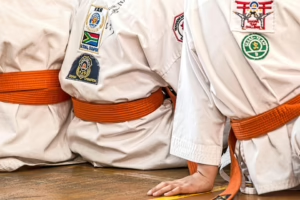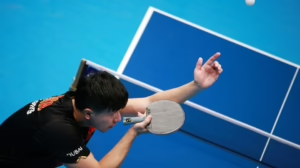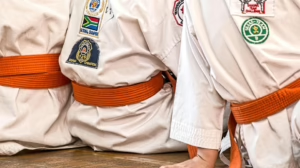Meet the Innovators: Pioneers Shaping the Future of Acrobatic Performance
Introduction
Acrobatic performance, a discipline that blends athleticism, artistry, and creativity, has long captivated audiences with its breathtaking displays of human potential. From ancient traditions to modern spectacles, acrobatics has evolved significantly over the centuries. Today, a new generation of innovators is reshaping this vibrant art form, leveraging technology, interdisciplinary collaboration, and diverse cultural influences to push the boundaries of what is possible. This article explores the journeys, philosophies, and groundbreaking contributions of several pioneers in the field, highlighting their unique approaches and the impact they are having on the future of acrobatic performance.
The Evolving Landscape of Acrobatic Performance
The history of acrobatics can be traced back thousands of years, encompassing a wide variety of cultural expressions. Traditional forms, such as Chinese acrobatics and European circus arts, laid the foundation for what we recognize today. However, in recent decades, the landscape has transformed dramatically.
With the advent of technology and globalization, acrobatics is no longer confined to its historical roots. Performers now have access to digital tools, multimedia elements, and a range of artistic influences from around the world. The incorporation of these factors has led to a rich tapestry of performance styles, blending elements of dance, theater, and visual art with acrobatics.
Innovator #1: Cirque du Soleil and the Evolution of Circus Arts
One of the most prominent examples of innovation in acrobatic performance is Cirque du Soleil. Founded in 1984 in Montreal, Canada, Cirque du Soleil has transformed the perception of circus arts by shifting the focus from animal acts to human excellence. Co-founder Guy Laliberté envisioned a performance that was not just about circus skills but a storytelling medium driven by emotional connection.
Cirque du Soleil’s productions, including “O,” “Kà,” and “Mystère,” intertwine acrobatics with theatrical narratives, elaborate sets, and innovative technology. The company has also embraced diversity, showcasing a variety of cultural influences in its performances. By prioritizing artistry and creativity, Cirque du Soleil has redefined what a circus can be, inspiring countless acrobats and performers worldwide.
Innovator #2: The Rise of Aerial Arts
The aerial arts—encompassing disciplines such as aerial silks, aerial hoops, and trapeze—have gained immense popularity in recent years. Innovators in this space, such as aerialist and choreographer Amelia Rudolph, are pushing the boundaries of what can be achieved suspended in the air. Rudolph co-founded the company Bandaloop, which fuses aerial performance with dance, often performing on unconventional surfaces such as walls and buildings.
Her approach to aerial acrobatics emphasizes the integration of movement and music, creating a multisensory experience for the audience. Rudolph’s work not only showcases technical prowess but also highlights the emotional narratives that can be conveyed through aerial performance. The immersive nature of her performances encourages audiences to reconsider their relationship with space, movement, and gravity.
Innovator #3: Technology in Acrobatic Performance
As technology continues to advance, so too does its application in the realm of acrobatics. Innovators like Akram Khan, a British-Bangladeshi choreographer and dancer, are utilizing immersive technologies such as projection mapping and virtual reality to enhance the viewer’s experience. Khan’s works often incorporate elements of contemporary dance and traditional South Asian dance, reflecting his multicultural background.
In his production “Xenos,” Khan explored themes of migration, war, and human resilience through a blend of physicality and technology. The integration of real-time video projections not only amplifies the visuals but also deepens the audience’s emotional engagement. By merging acrobatics with cutting-edge technology, Khan is setting a precedent for future explorations in the field.
Innovator #4: Interdisciplinary Collaboration
Another crucial aspect of modern acrobatic performance is the growing trend of interdisciplinary collaboration. Artists from various fields are coming together to create innovative works that transcend traditional boundaries. One notable collaboration is between visual artist and performer Trixie & Monkey, who integrates stunning visual art with acrobatics.
In performances that feature live painting, Trixie & Monkey creates a dynamic interaction between the visual and kinetic elements. As acrobatic performers execute intricate routines, the artwork evolves in real-time, resulting in a unique synergy between performer and artist. This innovative approach not only captivates audiences but also challenges performers to think creatively about their role in the artistic process.
Innovator #5: The Global Influence of Street Performance
Street performance has long been a breeding ground for acrobatic talent. Innovators like the troupe “The Flying Steps,” a renowned breakdancing group from Germany, have elevated street performance into a recognized art form. Their productions combine elements of hip-hop culture with acrobatic feats, showcasing the athleticism and creativity of breakdancing.
By incorporating acrobatic elements into their routines, The Flying Steps has pushed the boundaries of street performance. Their work emphasizes community engagement, often involving workshops and outreach programs to inspire the next generation of performers. This grassroots approach to acrobatics highlights the importance of accessibility and cultural exchange in shaping the future of the art form.
Innovator #6: Education and Training
The future of acrobatic performance relies not only on individual innovators but also on the educational frameworks that support them. Institutions like the National Circus School in Montreal are pioneering initiatives to train young talent in acrobatics and related disciplines. By providing a comprehensive education that merges technical skill with artistic expression, these schools cultivate the next generation of innovators.
Educators like Laura Stokes, who teaches at the National Circus School, emphasize the importance of creativity in their training programs. By encouraging students to explore their artistic voice while mastering acrobatic techniques, educators play a vital role in shaping the future of the art form. The emphasis on innovation and self-discovery empowers young performers to challenge conventions and envision new possibilities.
The Role of Cultural Diversity
As acrobatic performance continues to mature, the influence of cultural diversity becomes increasingly significant. Performers from various backgrounds bring unique perspectives and styles, enriching the art form. Innovators like Kimiye Murooka, who specializes in traditional Japanese acrobatics, highlight the importance of cultural heritage in contemporary performance.
Murooka’s work often incorporates elements of Japanese storytelling, utilizing acrobatics to convey complex narratives rooted in tradition. By bridging the gap between ancient practices and modern interpretations, she demonstrates how cultural diversity can inspire innovation while preserving valuable traditions. This interconnectedness serves to broaden the scope of acrobatic performance, allowing for a more inclusive and diverse artistic landscape.
Conclusion: Shaping the Future Together
As we look toward the future of acrobatic performance, it is clear that innovators are not only redefining the limits of the art form but also paving the way for a more inclusive and multidimensional approach. Through technological integration, interdisciplinary collaboration, and a commitment to cultural diversity, these pioneers are shaping a new narrative in acrobatics that emphasizes creativity, emotional connection, and community engagement.
As audiences continue to seek fresh and engaging experiences, the contributions of these innovators will be crucial in keeping acrobatic performance vibrant and relevant. By embracing change while honoring tradition, the future holds exciting possibilities for acrobatic performance—a testament to the resilience and adaptability of the human spirit.
Modern Footnotes
- Guy Laliberté, co-founder of Cirque du Soleil, has often spoken about the importance of emotional storytelling in performance. Cirque du Soleil: The Evolution of Circus
- Amelia Rudolph’s work with Bandaloop demonstrates a unique approach to aerial performance that integrates dance and architecture. Bandaloop: Aerial Dance
- Akram Khan’s exploration of technology in performance art is well-documented and has garnered international acclaim. Akram Khan Company
- The Flying Steps’ creative blend of breakdancing and acrobatics showcases the potential of street performance as a legitimate art form. The Flying Steps
- Educational institutions like the National Circus School serve as incubators for the next generation of acrobatic talent, fostering creativity and technical skill. National Circus School
This article underscores the ongoing evolution of acrobatic performance and the many innovators contributing to its vibrant future.


























Add Comment